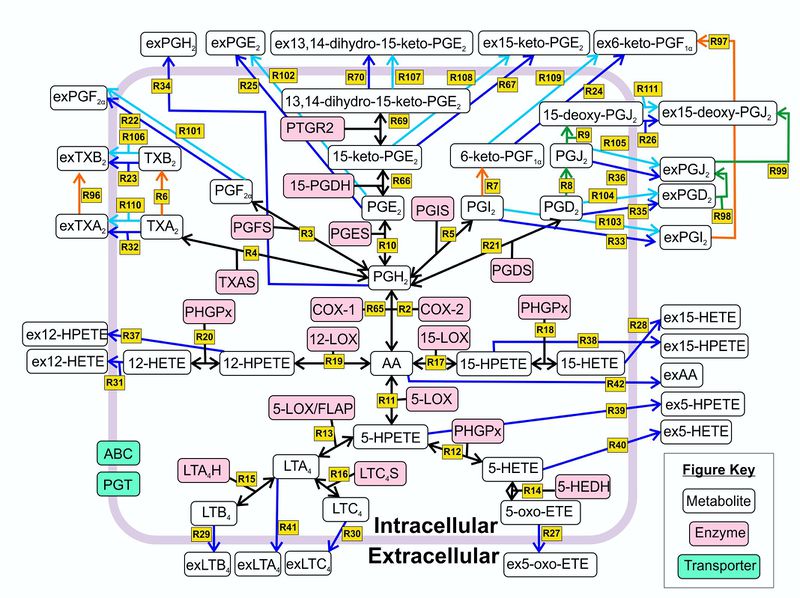Welcome to the In-Silico Model of Cutaneous Lipids Wiki
Contents
Description of the Model
We aim to create a quantitative computational model of the cutaneous lipid signalling networks, including variables such as multiple lipid substrates and enzyme isoforms. Model construction will be guided by literature studies, combined with new experimental lipidomics data collected in this project. In order to analyse model properties, experimental studies such as altering the systemic availability of fatty acids and the effect upon the anti-inflammatory milieu will be measured. This information will be integrated into the model to obtain estimated kinetic parameter values and also to validate and refine the overall model topology. The resulting mathematical model will be testable and predictive of the lipid responses during inflammation. The insights obtained will allow for more targeted experiments to be designed in order to better understand skin lipid biology and to aid in the mapping of lipid networks contributing to inflammation. This will ultimately support the design of interventional studies to combat skin disease.

Reactions
Literature information surrounding every reaction within the model are described on the following pages: